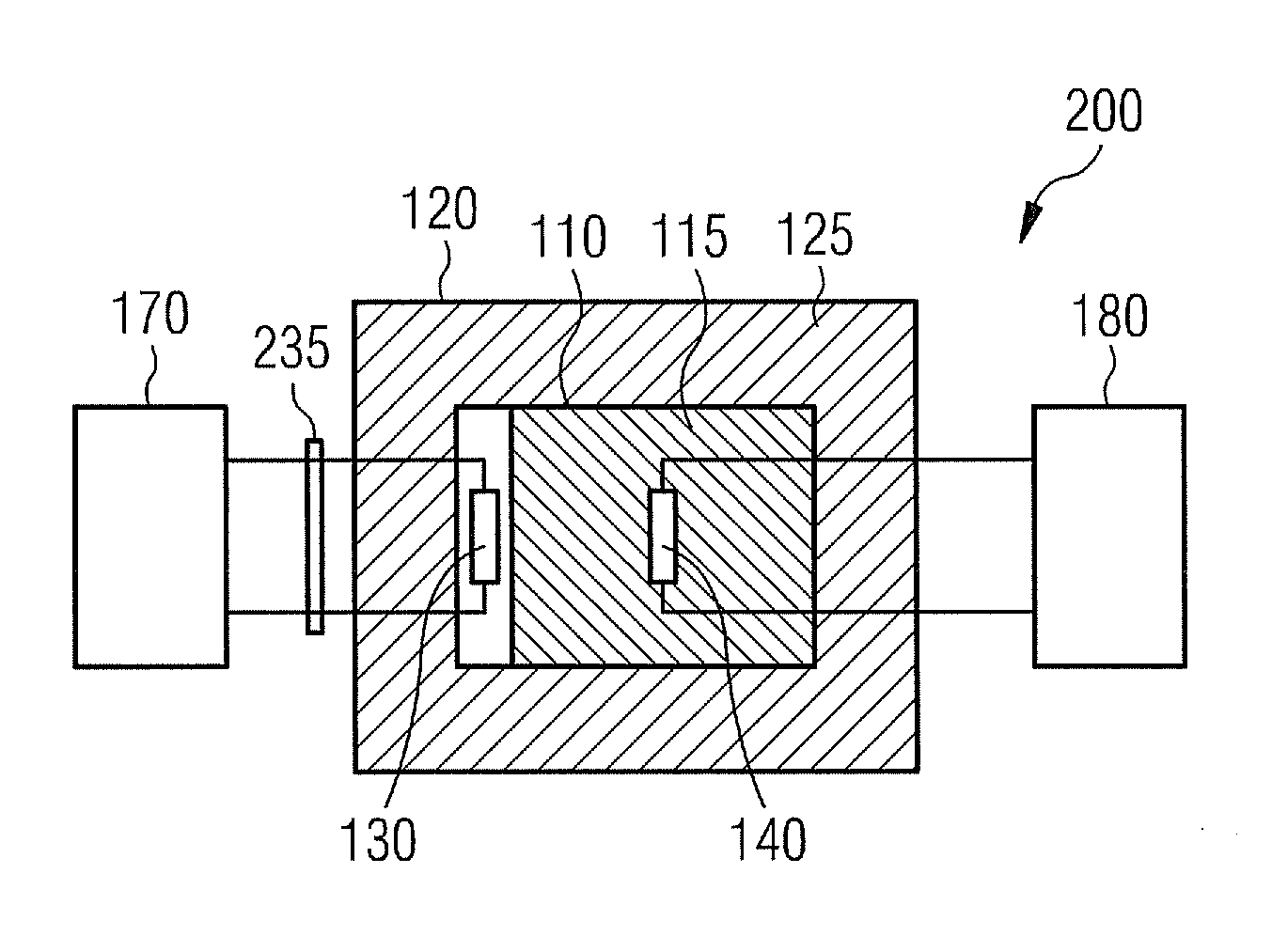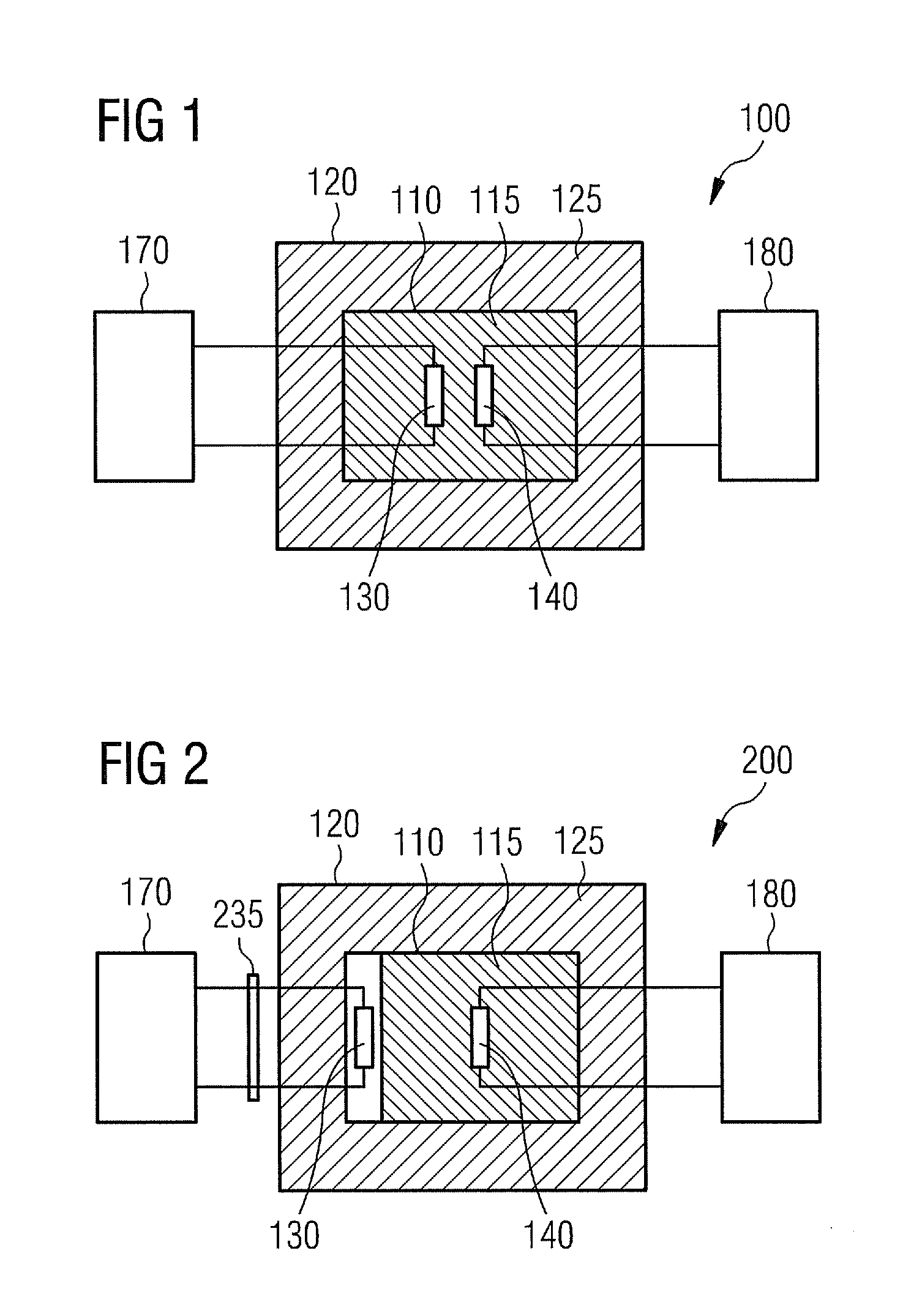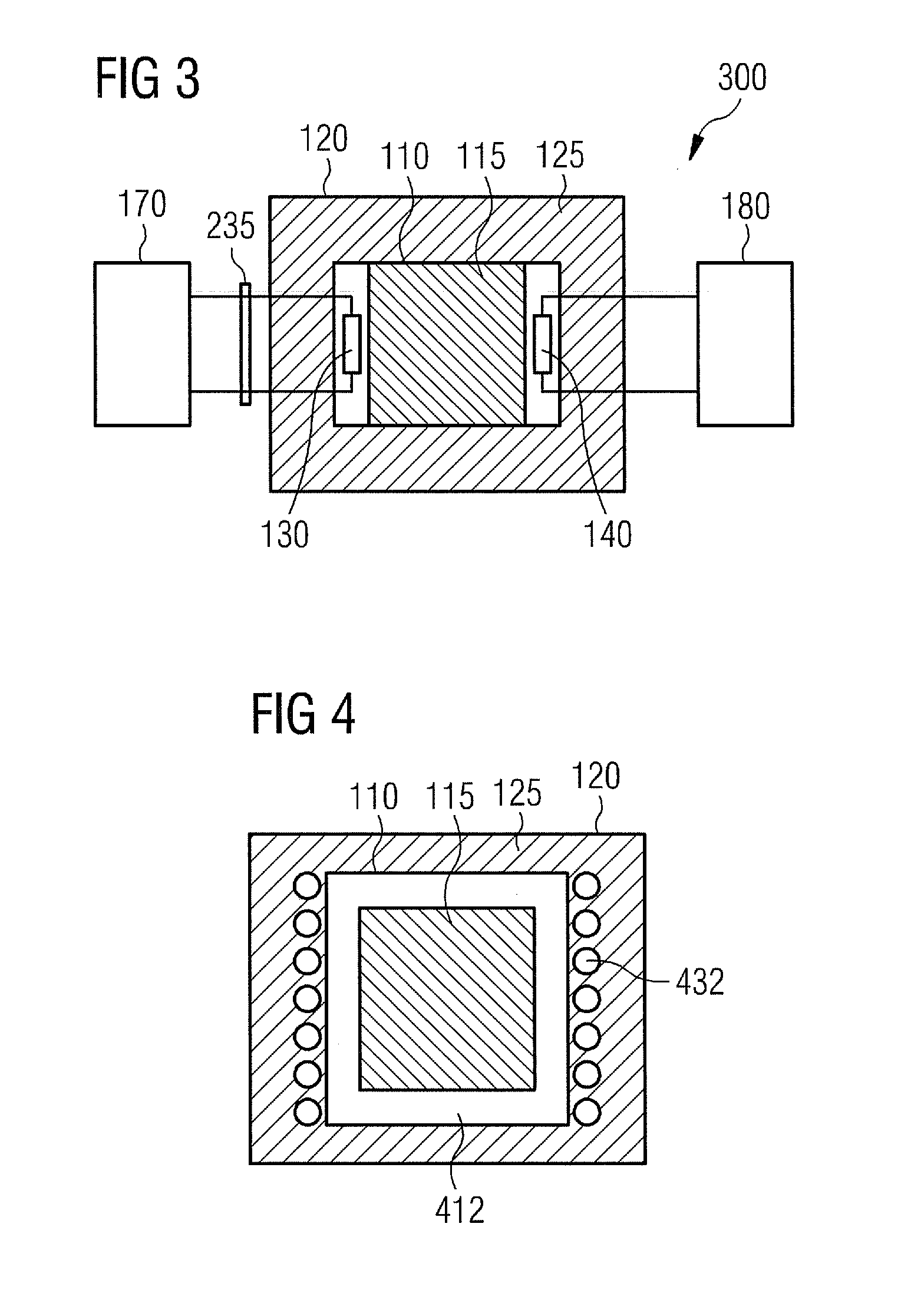Energy transfer system comprising a phase change material
- Summary
- Abstract
- Description
- Claims
- Application Information
AI Technical Summary
Benefits of technology
Problems solved by technology
Method used
Image
Examples
first embodiment
[0062]FIG. 1 shows the main components of an energy storage and energy transfer system 100 in accordance with the invention. A first container 110 comprising a PCM 115 is enclosed by a second container 120. The two containers 110, 120 are at least partly being thermally isolated from each other by a thermal isolation material 125.
[0063]At least one heat generation element 130 is receiving energy from an external energy source 170. The energy being received by the heat generation element 130 is used for heating the PCM 115. According to the embodiment described here the provided energy is electric energy, which is converted into thermal energy by the heat generation element 130. Further, at least one heat extraction element 140 is providing thermal energy to an external heat engine 180. This provided thermal energy is used for electricity production.
[0064]From the illustrated embodiment shown in FIG. 1 it can be seen that the heat generation element 130 is in direct physical connecti...
second embodiment
[0066]FIG. 2 shows the main components of an energy storage and energy transfer system 200 in accordance with the invention. From FIG. 2 it can be seen, that the heat generation element 130 is not in physical connection with the PCM 115. This will be an effective method of trans-ferring heat to the PCM 115 if the element 130 comprises at least one inductive heating element. In this case energy is preferably supplied to the heat generation element 130 as an AC-voltage. Thereby, the frequency of the AC may be the frequency of a utility grid. In order to adapt the applied frequency a frequency controller 235 is provided. With this frequency controller 235 the frequency of the AC voltage can be scaled to another frequency than the frequency of the utility grid. The frequency may also for various embodiments be alternated during operation.
[0067]For an even further embodiment of the invention, the heat generation element 130 may be directly connected to the utility grid. Thereby, a surplu...
third embodiment
[0070]FIG. 3 shows the main components of an energy storage and energy transfer system 300 in accordance with the invention. As can be seen from FIG. 3, the at least one heat extraction element 140, which is used for extracting thermal energy from the PCM 115, can be located such that it is not in direct physically contact with the PCM 115.
[0071]FIG. 4 shows an induction coil 432, which may be integrated for instance in the thermal isolation material 125 of the energy storage and energy transfer system 300 shown in FIG. 3. The windings of the induction coil 432 are not in direct physical contact with the PCM 115 to be heated, but are separated by some refractory material 412.
PUM
 Login to View More
Login to View More Abstract
Description
Claims
Application Information
 Login to View More
Login to View More - R&D
- Intellectual Property
- Life Sciences
- Materials
- Tech Scout
- Unparalleled Data Quality
- Higher Quality Content
- 60% Fewer Hallucinations
Browse by: Latest US Patents, China's latest patents, Technical Efficacy Thesaurus, Application Domain, Technology Topic, Popular Technical Reports.
© 2025 PatSnap. All rights reserved.Legal|Privacy policy|Modern Slavery Act Transparency Statement|Sitemap|About US| Contact US: help@patsnap.com



